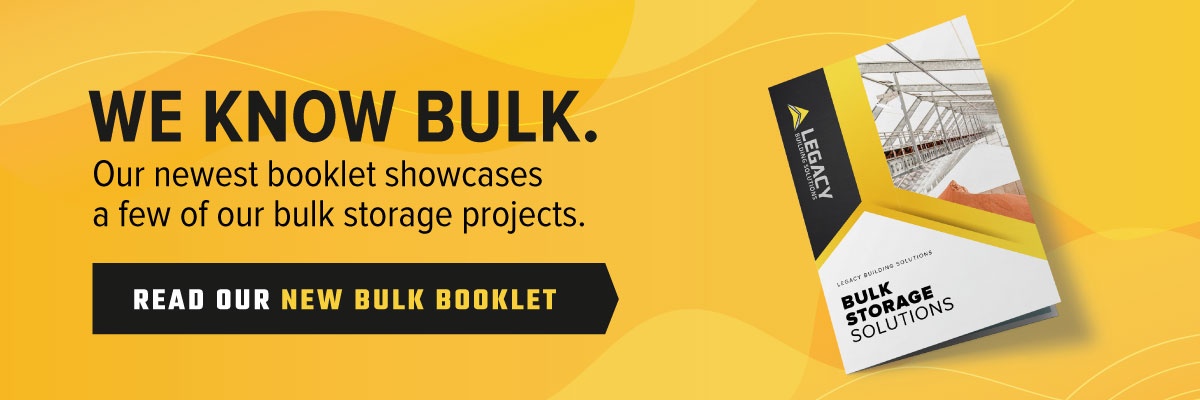Pros and Cons of Different Building Materials
.webp)
A new building is a major capital investment. You want a structure that will serve you well in all respects for as long as possible. What does that mean in terms of building materials?
When we talk about traditional buildings, we’re referring to the materials and styles most commonly used in the past. For commercial purposes, that might be metal buildings, wood buildings, or even brick-and-mortar or concrete buildings. But you can also consider fabric buildings, a different type of permanent commercial structure.
Each type of building material offers certain advantages and also drawbacks. Every structure is unique in some ways, so it’s important to consider every detail. Let’s see how various building materials compare based on key decision-making factors.
| Fabric | Wood | Metal | Brick/Concrete | |
| Clear Span Design |
Yes, can be designed to any length, width, or height |
No |
Yes |
No |
| Portability |
Yes, though permanent, buildings can also be relocated |
No |
No |
No |
| Foundation Options |
Yes |
No |
Require concrete foundation, with or without concrete slab |
No |
| Naturally Bright Interior |
White uninsulated fabric is 12% translucent, allowing enough natural light for daytime work
White interior is light and bright, requiring less artificial lighting |
No |
No |
No |
| Enhanced Acoustics |
Does not reverberate
Absorbs internal sounds for naturally quieter interior |
Can transmit some external sound
Helps dampen interior sounds |
Reverberates, amplifying external or internal sounds |
Does not transmit external sound
Hard surface can amplify interior sound |
| Low Maintenance |
Yes
Virtually maintenance free required
Rinses clean
Flexibility resists damage from bumps and scrapes
Easy, quick onsite damage repair |
No
Require ongoing upkeep
Expensive damage repair
|
No
Resistant to mold and insect damage
Can be dented or punctured
Vulnerable to rust and chemical corrosion
Screw holes and seams allow air and moisture leakage
Maintenance and repairs are expensive |
Yes
Impervious to rust and chemical corrosion
Vulnerable to mold and mildew
Prone to cracking
Easily damaged from accidental equipment bumps |
| Quick Installation |
Fabric buildings can be designed and installed about 1/3 faster than wood or metal buildings |
No |
Pre-engineered steel is faster to construct than concrete or wood but slower than fabric buildings |
No |
| 100% Custom Design |
Yes
Any size, shape or options
Easily expandable |
No
Limited by architectural constraints and/or construction methods
Potentially expandable |
No
Can be expanded longitudinally |
No
Requires some other building material for roofing |
| Naturally Energy Efficient |
Yes
Thermally non-conductive
Seamless and airtight
Artificial lighting not necessarily required |
Yes
Thermally non-conductive but may not be airtight
Artificial lighting required |
No
Conducts heat and cold
Artificial lighting required |
Yes
Thermal mass can reduce heating and cooling costs
Artificial lighting required |
| Durability |
Can last for decades
Fabric impervious to corrosion and rot
Can withstand all extreme weather including seismic events |
Can last 100 years or more
Must be protected against the elements
Vulnerable to insect and moisture damage
Limited ability to withstand high winds, heavy snow loads, or seismic events |
Can last for 20-50 years
Does not tear
Expands and contracts and can eventually warp
Prone to damage from high winds and hail |
Can last 50 years or more |
Total Cost of Ownership
The ultimate value of a building comes from its ability to perform as expected with the least hassle over time. So, which building material is best for your application? It pays to fully investigate all your options to achieve the building you need now and for the future.
Add up the pros and cons over the number of years you expect to use the building–initial cost, time to occupancy, maintenance, repairs, operations overhead, and intangibles such as worker safety and comfort. We encourage you to learn more about how fabric compares for your specifications, location, timeline, budget, and long-term goals.
Frequently Asked Questions
The most common building materials include fabric, wood, metal, and brick/concrete. Each has unique strengths and drawbacks. Fabric buildings are a modern, permanent alternative that offer advantages in clear span design, energy efficiency, speed of construction, and maintenance compared to traditional materials.
Yes. Fabric buildings can be engineered to any length, width, or height with completely open interiors free of interior columns. This makes them ideal for warehousing, sports facilities, aviation hangars, and bulk storage. Wood and concrete buildings cannot achieve clear spans, while metal buildings have limitations and higher costs when expanding beyond 150 feet.
Fabric buildings can be installed about one-third faster than wood or metal structures, and significantly faster than brick or concrete. This speed reduces downtime, accelerates operations, and lowers labor costs. Metal buildings are quicker to install than concrete but still slower than fabric.
Yes. Fabric cladding is thermally non-conductive, seamless, and airtight, making fabric buildings naturally energy-efficient. They often require less artificial lighting since white fabric allows up to 12% natural translucency, creating a bright interior. Metal buildings conduct heat and cold, while wood and concrete require additional systems to improve efficiency.
The best choice depends on your application, location, and budget. Fabric buildings often deliver the lowest total cost of ownership thanks to faster installation, minimal maintenance, and energy efficiency. When evaluating long-term value, consider not just upfront costs but also operating expenses, repairs, and occupant comfort.
Subscribe to our Blog
Recent Posts
- 5 Factors Every Project Owner Should Consider Before Approving Building Materials
- The 20-Year View: How Material Choices Impact Long-Term Operational Costs
- Climate Resilience in Commercial Construction: Why Traditional Methods May Not Be Enough
- Speed and Quality: The Role of Hybrid Building Materials
- Beyond the Bleachers: Designing Visually Striking Sports Facilities

